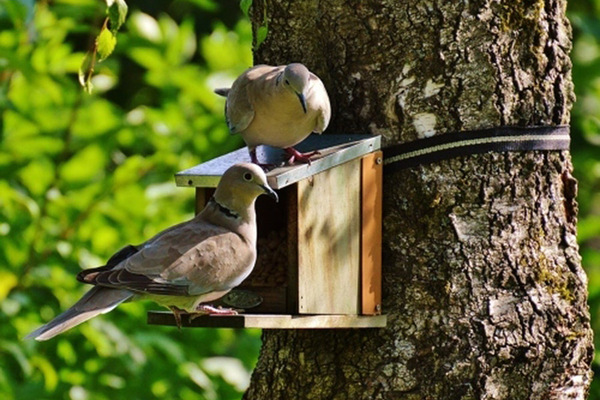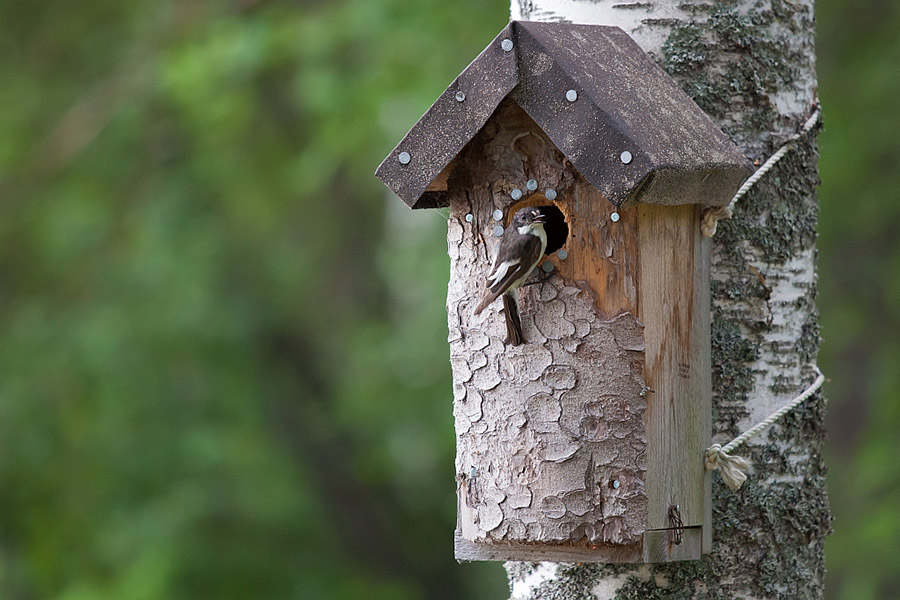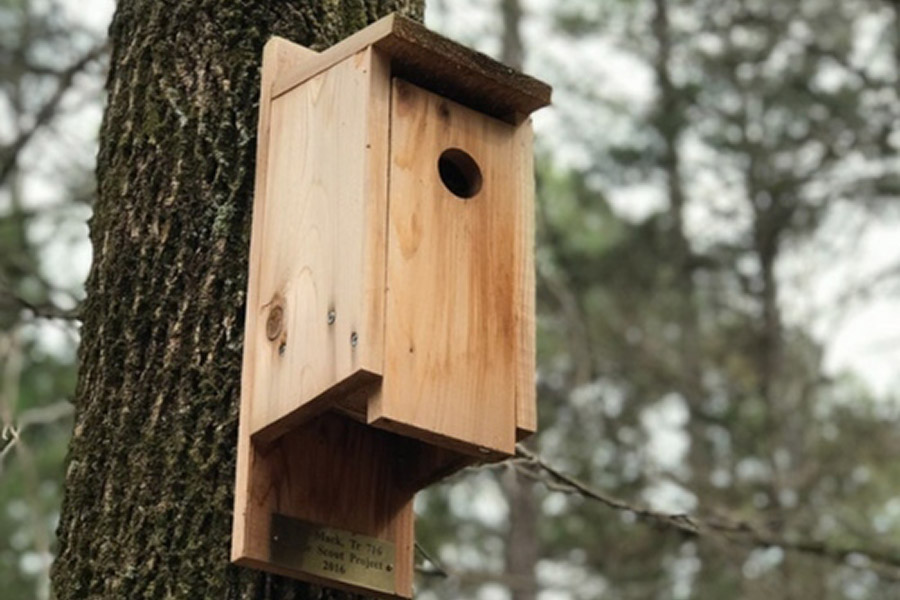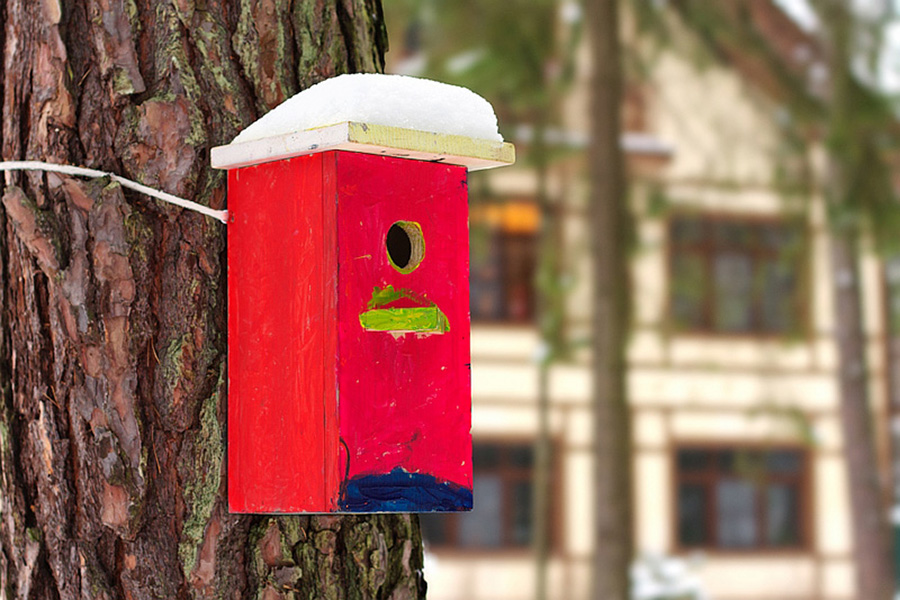Helping Endangered Birds: A Good Guide To Building A Safe Nest In Your Backyard

Image by Alexas_Fotos on Pixabay
The Impact of Habitat Destruction on Endangered Species
A bird does not sing because it has an answer; it sings because it has a song. — Maya Angelou
Every year, thousands of animal and plant species are at risk of endangerment. The main reason behind this fact is habitat destruction. Habitats are the areas where plants and animals live. With deforestation, pollution increases, and escalated development, habitats inevitably get destroyed and biodiversity is at risk.

A Small Bird Perches at the Entrance of a Rustic Birdhouse
Some large, biodiverse habitats like the Amazon Rainforest and Great Barrier Reef are facing environmental challenges. These ecosystems are home to many unique species of plants and animals. When habitats are threatened, it can put pressure on the species that live there.
While habitat restoration on a larger scale is challenging, we can still make a meaningful difference locally. Our backyards and neighborhoods can provide vital resources for birds and other wildlife.
By learning about the needs of local bird species and providing for needs such as food, shelter, and nesting spots, we can support biodiversity close to home. Placing intentionally designed birdhouses and nurturing our trees and gardens gives birds places to nest, feed, and thrive.
Through taking time to read and research about birds and wildlife-friendly spaces, we can help ensure biodiversity and protect species—from tree to tree and from one backyard to another.
Understanding Cavity Nesters: Why Are They Important?
Among the vast variety of bird species, cavity nesters hold a special place in the avian world. Many types of birds have historically depended on tree hollows, abandoned woodpecker nests, and other natural cavities for nesting. These locations offer safety from predators and protection from harsh weather conditions.
However, as urban sprawl continues and natural landscapes disappear, these natural nesting spots are becoming scarcer. The decreasing number of appropriate nesting sites leaves many birds vulnerable to predators, harsh weather, and breeding challenges. But, with our intervention, we can change this narrative.
Why Cavity Nesting Birds Matter
Many kinds of birds need tree holes or old woodpecker nests to build their nests and raise baby birds. These spots are called cavity nests. Some cavity-nesting birds are eastern bluebirds and white-breasted nuthatches.
Cavity nests keep these birds safe from predators and bad weather as they breed. But as towns and cities grow, there are fewer natural areas and fewer cavity nesting spots. This makes it hard for the birds to safely have babies.
We can help by putting up birdhouses! Simple birdhouses give cavity-nesting birds a safe place to nest. When we put birdhouses in our yards or on balconies, we help the birds survive and make more baby birds.
Some birdhouses even have webcams now. This lets you watch the birds up close as they lay eggs and raise chicks. It's fun and helps you learn about the birds.
Tip: Be careful where you put bird feeders. Putting them on tree trunks can attract pests like squirrels and rats. If these pests are an issue, use smooth metal poles to keep them away and feed the right animals.
Picking the Perfect Birdhouse
Research First, Then Choose a Birdhouse
Before buying or building a birdhouse, do some research first. Different birds like different types of homes. A bluebird house may not work for a nuthatch. Use guides and websites to learn what dimensions, hole size, floor space, etc. your bird needs. This helps you get the ideal home.
Pick the Right Tree for the Birdhouse
Next, decide where to install the birdhouse. Good trees are four to twelve inches wide at chest height and have low branches. Low branches allow birds to land and look around before going in the house.
Any tree can hold a birdhouse, but some are better. Hardwoods like oak are best, since pines have sticky sap. Also, some birds prefer certain trees. Sparrows like elms. Fruit trees like cherry trees give birds food, too.

A Natural Wood Birdhouse Made with Eco-Friendly Materials - Photo By Sam K
Building an Eco-Friendly Birdhouse
Why Go Green?
Regular birdhouses use treated wood, chemical paints, and plastic. These can hurt birds and nature over time. Eco-friendly birdhouses use natural materials instead. This makes them safe for birds and nature. Natural materials also rot away without harm when the birdhouse is old.
Green Materials to Use
- Reclaimed Wood or Bamboo: These are strong and haven't been treated with chemicals. This makes them safe for birds and nature.
- Natural Fasteners: Use jute twine, hemp rope, or wooden pegs instead of metal or plastic. These are strong, long-lasting, and eco-friendly.
- Natural Paints: Paint made from plants won't chip or hurt birds or nature.
DIY: Make Your Own Green Birdhouse
Follow these ste ps to build an eco-friendly birdhouse:
- Get Materials: Find reclaimed, untreated wood or bamboo at local shops.
- Design It: Sketch a simple house with proper ventilation and entrance size for your birds. Angle the roof for rain runoff.
- Build It: Use nontoxic glue to join the wood pieces. Wooden pegs work instead of nails.
- Weatherproof It: Add an overhanging roof to protect from rain. Beeswax on the wood makes it water resistant.
- Decorate It: Use leaves, stones, or small plants to decorate naturally. This looks nice and also insulates.
- Mount It: Attach to a tree without harming it. See the next sections for tips.
Eco-Friendly Mounting Materials
- Jute or Hemp: These natural ropes mount the house but don't hurt trees. They rot away over time.
- Green Glue: Use nontoxic, eco-friendly glue to join house parts or fill gaps.
Mounting Without Harm
- Avoid Nails & Screws: Nails and screws damage trees. This makes trees prone to problems. We want to help trees, not hurt them.
- Use Straps Instead: Flat straps hold birdhouses but don't damage bark. Some have Velcro or buckles for easy installation.
Maintenance
- Check Often: Make sure straps aren't too tight or loose as the tree grows. Tight straps can kill trees. Loose ones risk the house falling.
- Clean Yearly: Clear out old nests and pests annually. Keep the house inviting for birds.

A Hand-Painted Red Birdhouse with Snow on its Roof
Caring for Trees, Too
Putting up birdhouses is great, but we must also keep the trees and environment healthy. Birds need good trees and habitats to thrive, not just a house.
Tree Experts Can Help
If you're unsure about your trees' health along with your other plants and greenery, get help from the pros at Arborist Now. Specializing in tree and plant care, we make sure your trees and landscape stay healthy, which helps ensure a good environment for birds and wildlife.
As habitats disappear globally, know that you can help locally. By learning birds' needs, putting up birdhouses, and keeping trees and the environment healthy, we support endangered birds. This does our small part to preserve nature's wonders. These actions can help birds and allow us to enjoy various species in our own backyards. Even small, local steps can make a difference in preserving the wonders of nature.
Originally published in May 2016





